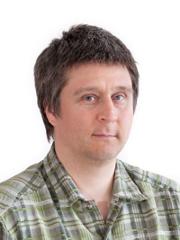Lysfenomener på himmelen

Björn Johan Gustavsson
Professor / Romfysikk
Unit: Department of Physics and Technology
Optical auroral research: Faster, higher, fainter!
Radio induced optical emissions: We can make our own aurora!
Main research area: Combined optical and incoherent scatter radar
(ISR) observations of aurora and HF-radio wave enhanced optical
emissions. The work on aurora ranges from observations and analysis of
intensified high-speed (25-50 frames per second) white light video
recording with the Odin imager (http://www.phys.uit.no/~maarten/of
"flickering aurora" (where the intensity varies at frequencies up to
15 Hz) and "black aurora" (narrow structures with reduced luminosity
in diffuse aurora), to tomography-like estimates of the
three-dimensional distribution of auroral volume emission rates using
image data from the Auroral Large Imaging System
(http://www.alis.irf.se/) and other multi-station optical
observations. When such observations are combined with ionospheric
parameters from ISR observations it is possible to discriminate
between proposed theoretical explanations. In particular this is
possible with HF-Heating experiment where the ionosphere is modified
with a high-frequency (~4-8 MHz) radio-wave beam that heats the
ionospheric electrons (from 1000 to 3500 K), creates small-scale
(~10 m) density depletions, drive wave-wave processes that causes the
ionosphere to emit radio waves, and accelerates electrons to high
energies enough to excite thermospheric atoms that emit visible
light. The possibility to control the HF-pump wave (its frequency,
light. The possibility to control the HF-pump wave (its frequency,
power, polarization, direction, pump-cycle duration, etc) makes it
possible to test theories for wave-plasma interaction.